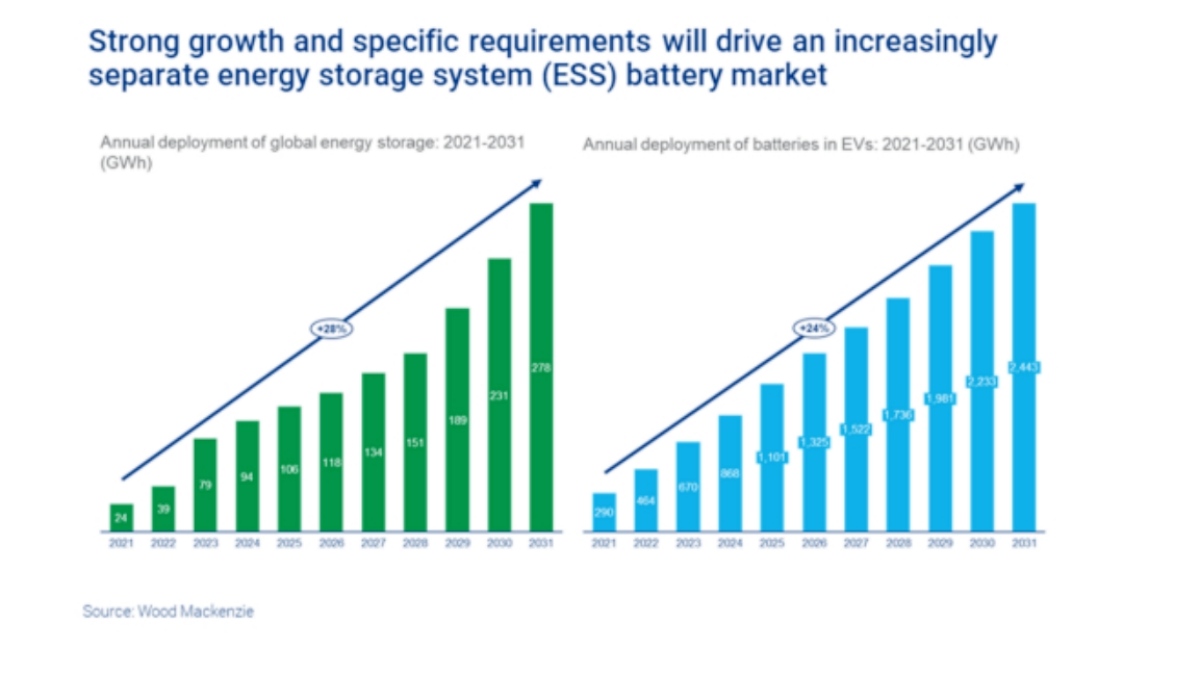Starlight Power shares the latest news with you.
Based on market and industry research, Starlight Power has focused on 3 key trends in the development of energy storage technology, which we analyse together below.
First, let's focus on the first graph. This graph shows the strong growth and specific requirements that will drive the growing independence of the energy storage battery market.

While EV batteries focus on increasing energy density to increase range and reduce charging time, energy storage batteries focus on cost, durability and storage time.
Policies can also influence the fragmentation of the battery market. In the US, the provisions of the Inflation Reduction Act grant an additional 10% investment tax credit for ESS projects containing at least 40% domestic (rising to 55% in 2029). In contrast, electric vehicle batteries have much stricter requirements for sourcing key minerals and require traceability. This will increase production costs and drive the separation of battery supply in the ESS market to avoid unnecessary increases in ESS battery prices.
New technologies such as advanced silicon-based and lithium-metal anode technologies and all-solid-state batteries are designed to increase energy density. As such, these new technologies will be prioritised for application in the electric vehicle and consumer electronics markets.
In contrast, the development of batteries for energy storage applications is focused on the specific needs of the industry. Lithium iron phosphate (LFP) cathode technology is rapidly gaining popularity in the ESS market thanks to its safety features, long cycle life and the abundance of iron and phosphate raw materials.
Another technology that is rapidly developing commercially and has attractive prospects for stationary storage applications is the sodium ion (Na-ion) battery. Na-ion batteries work on a similar principle to Li-ion batteries, but may not be as sensitive to rising lithium, cobalt and nickel prices as LFPs.
Cost reductions are driving innovation in the size and format of ESS batteries
One meaningful way to reduce costs is to increase the capacity and size of cells. This will reduce the number of system components, lower bill of materials (BOM) costs, simplify assembly and integration, and ease the burden on the battery management system (BMS).
The 280 Ah (ampere-hour) has become the new standard for LFP batteries in grid-scale applications, with capacities up to 560 Ah and cycle lives up to 12,000 cycles. However, larger batteries require higher manufacturing capacity and have implications for safety management.

In terms of battery formats, square cells currently dominate grid-scale ESS, mainly because they are favoured by Chinese battery manufacturers.They are space saving but costly to manufacture and die out relatively quickly due to less efficient thermal management.
In contrast, cylindrical cells are relatively safe, cheap and easy to manufacture and are economical to run due to their long life. Their shape can lead to the formation of cavities between cells in the pack, which reduces volumetric energy density. However, this is not a major issue for ESS applications compared to electric vehicles. We predict that the latest generation of larger cylindrical 46xx LFP cells will be used in various energy storage markets within the next decade.
For more starlight battery energy storage system information: www.starlitepower.com
02-29
202402-27
202401-12
202407-23
202305-31
2023